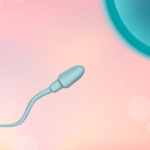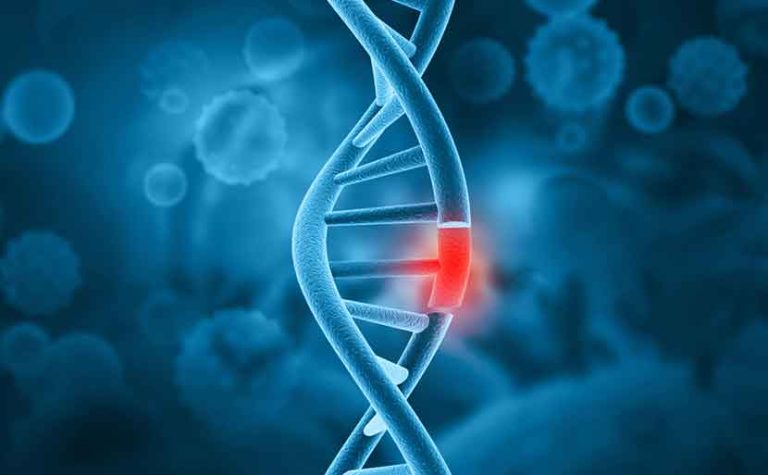If you use 12q24.31-q24.33., this will be done automatically:
Jaime Lin 1,2 , Gigliolle Romancini de Souza-Lin 1,3 , Fernanda Coan Antunes 1 ,
Letícia Burato Wessler 2 , Emílio Luiz Streck 2 , Cinara Ludvig Gonçalves 2
1 Universidade do Sul de Santa Catarina, Tubarão, SC, Brazil.
2 Universidade do Extremo Sul Catarinense, Criciúma, SC, Brazil.
3 Hospital Nossa Senhora da Conceição, Tubarão, SC, Brazil.
DOI: 10.31744/einstein_journal/2020RC5335
summary
Chromosomal abnormalities are responsible for several congenital malformations worldwide, some of which are associated with telomeric/subtelomeric deletions . Anomalies involving the telomere of chromosome 12 are rare, and there are few reports of deletions involving the 12q24.31 region in the literature, and to our knowledge, there are only four cases of deletions in the 12q24.31-q24.33 region. We report a further case of interstitial deletion of the 12q24.31-q24.33 band associated with autism spectrum disorder . A 2-year-old boy with global developmental delay associated with multiple congenital anomalies was diagnosed with 12q deletion syndrome by human genome CGH microarray 60K . In this study, we compared our patient with previously reported cases and reviewed the latest literature. These detailed analyses will contribute to the construction of genotype-phenotype correlations for 12q deletion and will help improve the diagnosis and prognosis of this deletion .
Keywords : chromosomal abnormalities , nervous system malformations, developmental disorders, autism spectrum disorders, 12q24.31 deletion syndrome
Introduction
Changes in gene dosage due to the gain or deletion of large genomic regions are the cause of many genetic disorders . They are often accompanied by phenotypes such as intellectual disability and autism spectrum disorder (ASD) (1) .
Autism spectrum disorder is a set of neurodevelopmental disorders characterized by a lack of social behavior and nonverbal interaction. A set of neurodevelopmental disorders characterized by a lack of social behavior and nonverbal interaction. A set of neurodevelopmental disorders characterized by a lack of social behavior and nonverbal interaction (within the first 3 years of life). Not a single disorder Rather than a single disorder, it is broadly considered to be a multifactorial disorder caused by genetic and nongenetic risk factors. It is widely considered to be a multifactorial disorder caused by genetic and nongenetic risk factors and their interactions. ASD is a very complex and heterogeneous disease, but it is a highly heritable disease (1) .
Among the techniques for detecting susceptibility genes for ASD, comparative genomic hybridization (CGH) techniques are widely used in ASD research and clinical settings to detect copy number variations (CNVs) on the genome. Copy number variants are an important source of genetic diversity and are responsible for disease susceptibility of several neurobehavioral phenotypes (2) . Some genetic abnormalities
that cause congenital malformations are associated with telomeric or subtelomeric deletions . Among them, telomeric/subtelomeric deletions of chromosome 12q are rare, and only a few patients with small stature have been reported to date. Telomeric/subtelomeric deletions of chromosome 12q are rare, and only a few patients with small stature have been reported to date with interstitial deletion of band 12q24.31-q24.33 without other karyotypic abnormalities. (3-6) We report a case of a patient with an interstitial deletion of band 12q24.31-q24.33. We report a case of a patient with an interstitial deletion in band 12q24.31-q24.33 and review the current literature.We report a patient with an interstitial deletion in band 12q24.31-q24.33 and compare the case with previously reported cases, including several other cases of deletions involving the 12q24.31 region.
Case report
A 2-year-old boy was admitted to a pediatric neurological examination because of global developmental delay associated with multiple congenital anomalies.
The patient was born from a first pregnancy in a healthy consanguineous family (parents were first-degree cousins). At the time of conception, the mother was 24 years old, and the father was 36 years old. There was no history of miscarriage, no reported use of prescription or over-the-counter medications, and no exposure to teratogens during pregnancy.
The pregnancy was complicated by ventricular enlargement detected by ultrasound at 5 months of gestation. Preterm labor was achieved at 7 months of gestation, with delivery by cesarean section. Birth weight was 1,720 g (<3rd centile), length 39 cm (<3rd centile), and occipital-frontal circumference (OFC) 31 cm (<3rd centile).
The patient was hospitalized four times during early infancy, twice for pulmonary infections, once at 6 months for surgical removal of an extra toe on the left foot and cryptorchidism, and finally once at 8 months for ventriculoperitoneal shunt surgery for hydrocephalus.
Early global delays in developmental milestones were noted. He held his head up at 12 months of age and sat at 16 months.
Now, at 24 months of age, the patient presents with failure to thrive, weight 10.6 kg (5th percentile), length 78 cm (below the 5th percentile), and OFC 48 cm (50th percentile). Physical characteristics were significant for a large anterior fontanel and slight coarsening of the facial appearance. The nose was short with anteverted nostrils and smooth hyphae ( Figure 1-A ). The ears were normally set and of normal size and shape. The palate was narrow with thick gums. The patient also presented with clinoid digits and polydactyly of the fifth digit on the left foot ( Figure 1-B,C ).
Figure 1. Multiple congenital anomalies.
 (A)Slight coarsening of the face, anterior tilt of the nostrils, smooth friendliness. Ears were normally set, normal in size and shape
(A)Slight coarsening of the face, anterior tilt of the nostrils, smooth friendliness. Ears were normally set, normal in size and shape

Neurological evaluation was notable for severe agitation associated with autoaggressive behavior characterized by head bumps resulting in severe self-injury. The patient presented with spastic hypertonia and brisk tendon reflexes and was unable to walk or speak independently.
Head magnetic resonance imaging revealed supratentorial hydrocephalus, ballooning of the optic chiasmatic recess, a thin corpus callosum, dilated lateral and third ventricles, absent septum pellucidum, and cerebral hypomyelination (Figure 2) .
Figure 2. Magnetic resonance imaging, T2-weighted sagittal image. The corpus callosum was thin. Magnetic resonance imaging, T2-weighted coronal image.



The human genome CGH microarray 60K (Agilent Technologies™) revealed a terminal deletion starting in the middle of 12q24.31 from genomic position (123.309.075bp) to the proximal end of the q-arm (132.283.607bp), arr[NCBI36/Hg18]12q24.31-q24.33(123.309.075-132.283.607)X1, which led to the diagnosis of 12q deletion syndrome . This study was performed by the Human Genome Research Center (Institute of Biological Sciences-University of São Paulo) in 2011.
The number of known genetic disorders associated with ASD is increasing with the use of array comparative genomic hybridization (aCGH). Such genetic variability associated with similar autistic cognitive behavioral phenotypes has given rise to the concept of “syndromic autism” or “complex autism” ( autism associated with genetic disorders/genetic syndromes ), which qualifies individuals with at least one morphological abnormality/malformation or severe intellectual disability. This contradicts the concept of “nonsyndromic autism” or
“simple”/“pure”/“idiopathic autism (isolated autism),” which means that individuals with moderate intellectual disability have normal cognitive function and no other associated signs or symptoms. (2)
Genetic testing of such syndromic autism cases may lead to recognition of rare and/or underreported diseases. Among these chromosomal abnormalities , 12q24.31-q24.33 telomeric/subtelomeric deletions are rare, and the main clinical findings of previously reported cases are summarized in Table 1.
Our patient has several phenotypic findings consistent with those presented in other patients with 12q deletion , including developmental delay, coarse face, growth failure, large anterior fontanel, delayed speech development, and clinodactyly. Only one study showed that the parents were first cousins, which was also observed in our patient’s medical history. These findings contribute in detail to the expression of genotype/phenotype correlations for 12q deletion , and comparisons with additional patients will continue to add to this clinical description. The
deleted region contains 52 annotated genes. Of these P2RX2 and ACADS, the developmental delay and behavioral and social problems presented in our patient should be noted.
Conclusion
Further detailed findings of rare syndromes contribute to the development of genotype/phenotype correlations for 12q deletions , and comparisons with additional patients will continue to add to this clinical description. Genetic investigation of cases of syndromic autism may lead to the recognition of rare and/or unreported disorders. The authors emphasize the importance of genetic analysis for the study of chromosomal abnormalities
in patients with intellectual disability, dysmorphism, developmental delay and multiple congenital anomalies .
Observations
Technological advances in epidemiological and molecular genetics have recently provided new insights into the genetics of neuropsychiatric disorders. These new insights also have implications for the area of autism genetics, expanding our current knowledge of genetic disorders associated with ASD (1) .
Author Information
Lin J: http://orcid.org/0000-0002-7433-6231Sousa-Lin
GR: http://orcid.org/0000-0001-9930-7288Antunes
FC: http://orcid.org/0000-0001-5571-3321Wessler
LB: http://orcid.org/0000-0001-6700-0396Streck
L: http://orcid.org/0000-0002-2859-4678Gonalves
CL: http://orcid.org/0000-0003-2468-8885
References
- Park HR, Lee JM, Moon HE, Lee DS, Kim BN, Kim J, et al. A short review of the current understanding of autism spectrum disorders. Exp Neurobiol. 2016;25(1):1-13. Review.
- Marshall CR, Noor A, Vincent JB, Lionel AC, Feuk L, Skaug J, et al. Structural chromosomal variants in autism spectrum disorders. Am J Hum Genet. 2008;82(2):477-88.
- Al-Zahrani J, Al-Dosari N, AbuDheim N, Alshidi TA, Colak D, Al-Habit O, et al. Chromosome 12q24.31-q24.33 deletion causes multiple dysmorphic features and developmental delay: Overview of the first mosaic patient and phenotypes associated with 12q24qter deletion. Mol Cytogenet. 2011;4:9.
- Niyazov DM, Nawaz Z, Judge AN, Toriello HV, Martin CL, Adam MP. Genotype/phenotype correlation in two patients with subtelomeric deletions of 12q. Am J Med Genet A. 2007;143A(22):2700-5.
- Plotner PL, Smith JL, Northrup H. Deletion 12q: second patient with 12q24.31q24.32 deletion. Am J Med Genet A. 2003;118A(4):350-2.
- Sathya P, Tomkins DJ, Freeman V, Paes B, Nowaczyk MJ. Report of a patient with de novo deletion 12q:12q24.31q24.33 deletion. Am J Med Genet. 1999;84(2):116-9.
- Baple E, Palmer R, Hennekam RC. 12q24.31 microdeletion may mimic neonatal Wiedemann syndrome. Mohr Syndrome. 2010;1(1):42-5.
- Choury E, Choucair N, Abou Ghoch J, El Sabbagh S, Corbani S, Megarbane A. Report of a patient with a paternally inherited 12q24.31 microdeletion and insulin-dependent diabetes mellitus. Mole Syndrome. 2013;4(3):136-42.
- Qiao Y, Tyson C, Hrynchak M, Lopez-Rangel E, Hildebrand J, Martell S, et al. Clinical application of a 2.7M cytogenetic array for CNV detection in subjects with idiopathic autism and/or intellectual disability. Clin Genet 2013; 83(2):145-54.
- Palumbo O, Palumbo P, Delvecchio M, Palladino T, Stallone R, Crisetti M, et al. 12q24.31 refinement: report of a girl with intellectual disability, dysmorphism, seizures, and facial dysmorphism. Am J Med Genet A. 2015; 167A(2):438-44. Review.
Table 1. Clinical summary of cytogenetic abnormalities associated with 12q telomeric deletions
Table 1 Reported examples of deletions involving the 2p16p21 region
| Description of genetics | Reference | Phenotype |
|---|---|---|
| 46, XY, del (12) (q 24.31-q24.33), Mosaic | Al-Zahrani et al (3) | 8 years old, IGF-1 level Very low to severe growth retardation, developmental delay, facial abnormalities, low-set ears, cryptorchidism with short penis, elbow deformity |
| 46, XY, 12q subelomeric deletion; 1. | Niyazov et al. (4) | 8 years old, delayed language development, food seeking behavior, attention Defective hyperactivity disorder, high pain threshold, no facial abnormalities, additional anterior second hair, cruciate cruciate. Strabismus and obesity |
| 46, XY, 12q subelomeric deletion; 4.5Mb; 22 genes | 12 years old, left cryptorchidism, renal abnormalities (polycystic left kidney, ectopic right kidney). Cutaneous sulcus, microtia, delayed milestones, moderate ID, food-seeking behavior and self-injury behavior | |
| 46, XY, del (12) (q24.31q24.32) | Plotner et al (5) | 9 months old, tracheomalacia, unclear genitalia, Dandy Walker syndrome, rough face, large anterior Fontanella, short uvula. Ptosis in the left eye, thick gums, large tongue, mild generalized hypotonia, bisected scrotum, palpable testes on both sides, small penis, long fingers and patulous fingertips, developmental retardation (by 9 months) , unable to sit unsupported, crawl, babble, or coo). |
| 46, XY, del (12) (q24.31q24.33) | Sathya et al. Developmental level 10-12 months), no genital abnormalities. Genital abnormalities, microcephaly, large pubic fat pad, sacral hole, tapered fingers, duodenum, flat feet, cardiac abnormalities (periperitoneal VSD, mild tricuspid regurgitation, secundum ASD, mild biventricular and facial abnormalities such as left atrial dilatation, mild tricuspid regurgitation), large bulbous nose, and smooth threads. Facial abnormalities (large bulbous nose, smooth threads, large ears | |
| 46, XX, del (12) (q24.31) | Baple et al. (7) | 13 years old, malocclusion, overgrowth, hyperinsulinemia, developmental delay (walking at 1.5 years old, able to use several words at 2 years old), marked anxiety disorder, autism spectrum disorder , moderate to severe intellectual disability, cleft palate, wide nasal base, bulging cheeks, and highly arched palate. The limbs are large, with slightly tapered fingers, short toes, and the fourth left digit is proximally buried, with the fourth metacarpal shortened. |
| 46, XX, del (12) (q24.31) | Chouery et al. (8) | 2 years old, global developmental delay (at 18 months old, unable to sit without support, no crawling, no babble, and lacks social interaction skills) and smile in response infantile spasms, hypotonia, microcephaly, flat face, swollen cheeks, giant tongue, highly arched palate, kyphoplasty, and narrow ears. holes, cafe au lait spots, hypoarrhythmia |
| 46, XX, del (12) (q24.31) | Qiao et al.(9) | 8 years old, isolated ASD, global developmental delay , moderate ID, cleft palate upwards. The tongue is slippery, the ears are small, low, and set backwards, and the nasal root is high and thick, with a square tip. Prominent incisors and narrow palate, very tapered fingers and prominent fingertip pads. The nails were hypoplastic on both buttocks, with patchy eczema and thick ichthyosis-like skin.The patient was diagnosed as follows. T-cell cutaneous lymphoma (pigmentation seen on the lower back). |
| 46, XX, del (12) (q24.31) | Palumbo et al (10) | 12 years old, unidentified, convulsions, stereotype, lip loss, cheek bulge, persistent patent foramen ovale. Hypoglycemic episodes, spastic quadriplegia from the first few months of life, general delay (begins walking and speaking at 2.5 years), onset of walking at 2.5 years, speaking at 4 years, near the 4th metacarpal bone. The patient had a hypoplastic nail bone with an impaction. The facial abnormalities were characterized by an oblong face with a downwardly displaced cleft palate, a wide nasal floor, and a high nose. The nasal root is high, the palate is high, the teeth are densely packed, and the vermilion color of the lower lip is complete and autosomal. The ears are large and narrow with thick helices. Magnetic resonance imaging of the brain shows hypoplasia of the ventricles |
| 46, XY, del (12) (q24.31-q24.33) 9Mb | Current patient | A 12-year-old with developmental delay and difficulty walking and speaking independently. Impossible, poor growth, large frontal face; large frontal fontanelle, rough face, short snout, recurved nostrils, smooth tongue. Narrow palate and thick gums, torticollis in the fifth finger of the left hand, self-aggressive behavior, active spasmodic tendon reflexes. |
IGF-1: insulin-like growth factor-I; ID: intellectual disability; VSD: ventricular septal defect; ASD: atrial septal defect.
How to cite this article
Lin J, Souza-Lin GR, Antunes FC, Wessler LB,
Streck EL, Gonçalves CL. Autism-associated
12q (12q24.31-q24.33) deletion:
Report of a further very rare disorder. Einstein
(São Paulo) 2020;18:eRC5335. http://dx.doi.org/
10.31744/einstein_journal/2020RC5335
Corresponding author:
Fernanda Coan Antunes
Department of Medicine and Biology
University of Social Sciences
Santa Catarina Sur
Avenida Pedro Zaperini, 1,798 Centro
Zip Code: 88701-480 – Tubaro, SC, Brazil
Phone: (55 48) 99906-9929
Email: fernandacoan@hotmail.com
Received Date:
August 18, 2019
Accepted:
November 29, 2017
Copyright 2020
This content is licensed
under a Creative Commons
Attribution 4.0 International License





















